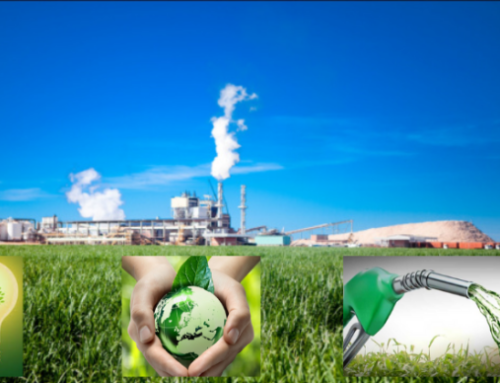Ivo Fouto (ivofouto@cenerbio.com) – June 30, 2020
Introductory article: https://cenerbio.com/green-and-sustainable-economic-recovery-after-covid-19-pandemic-alternatives-for-brazil-and-tropical-regions
3. Production of Pyrolysis Oil + Ethanol – Co-processing in Petroleum refineries:
Pyrolysis Oil (PYOIL) is being considered the new Green Petroleum, but from a renewable and sustainable source, for large-scale production of Biofuels.
Despite the current policy of the North American Federal Administration, the State of California, through the CARB (California Air Resources Board), works to regulate the use of Pyoil directly in Oil refineries (Co-Processing) for large-scale production of renewable Biofuels, considering their respective positive impacts on atmospheric carbon emission.
The industrial processing pathway is already defined and well known. The major barriers for this technology are related to the Biomass supply chain: High volumes; Homogeneity; Final delivered cost (production, handling, transport).
Energy Cane biomass, produced in tropical regions is the competitive, sustainable and renewable solution for raw material production to large industrial Pyoil manufacturing, for Co-processing application in local petroleum refineries, or for the creation of a large export platform.
3.1 Large-scale Pyrolysis Oil + Ethanol Production in Brazil and Tropical Region:
Pyrolysis is a widely known thermochemical process. The existing Pyrolysis technologies consider a conversion rate of approximately 1.49 tonnes of dry biomass, to produce 1.0 metric tonne of PYOIL.
Considering this efficiency, a mixture of 20% Pyoil in an FCC (Fluidized Catalytic Cracking) of 50,000 Bbl/day from a petroleum refinery (Co-processing), will require 802,875 tonnes/year of dry Lignocellulosic biomass.
Considering the data from the Billion-Ton Report – 2016, the maximum potential production of dedicated biomass in the USA are 23.5; 22.2 and 14.8 tons/ha/year for Grasses, Energy Crops, and Eucalyptus, respectively.
Considering these data, the dedicated planted areas necessary for the production of 802,875 dry tons/year of Lignocellulosic biomass would be respectively: 34,194 (Grasses); 36,100 (Energy Crops) and 54,138 (Eucalyptus) hectares.
These comparable productive data, in the same industrial process, indicate that Energy Cane can reach an Energy Density of 685.2 Gj/ha/year. This Energy Density is 3.17 and 4.3 times higher than Eucalyptus and Sugarcane, respectively.
The high cost of biomass production in the subtropical regions, associated with its high transport cost (low density), would generate an estimated biomass production in the range of 84-89 US$/dry ton.
Energy Cane has already proven itself as able to reach more than 110 dry tons/ha/year, with the additional advantage of generating non-fermentable sugars, suitable for the production of Ethanol, associated with the Lignocellulosic biomass dedicated to the production of Pyoil.
The estimated production cost of Energy Cane in Brazil would be between 22-27 US$/dry ton including transportation, considering a realistic and competitive yield of 80 dry tons/ha/year and a planted area of 16,150 ha for a self-sustaining production (including Cogeneration) of Pyoil (volume for a blend of 20% in weight, at 50,000 barrels/day FCC => 538,001 tonnes of Pyoil/year), and additional production of Ethanol (145 million liters/year).
Not only Energy Cane, with a conservative life cycle, as well as its technological processing route (pathway), are defined and approved by the EPA in the USA.
Projects using Energy Cane as the main source of raw material will meet the global sustainability guidelines in its 3 main pillars: Environmental; Social; Economic.
The main potential markets to be attended by this Co-processing technology will be North America; Europe and Asia.
Brazil could have the greatest benefit of the integrated use of this technology to produce biofuel on a large scale, but for that, it would be necessary a wide strategic reformulation in the Brazilian petroleum refining sector, in addition to the entry of new players in this sector.
Energy Cane with its demonstrated biomass productivity, low cost and consequent energy generation per planted area compared to other tropical energy crops, enhances the effect of reducing CO2 emissions and other pollutants (GHG – Greenhouse Gases) in the production and consumption of biofuels, in addition to its low cost and high scale production.
Considering the defined and well known industrial processing, the key economic factor for its success is in the biomass supply chain with an associated low cost, homogeneity, abundance, and availability, in a sustainable and competitive manner.
Considering the various variables involved, it is evident the need for a detailed and in-depth technical/financial study for an adequate investment decision making.
Next topic (July 07, 2020):
Disclaimer:
This presentation is being delivered by Cenerbio, regarding existing assets, technologies, and projects under negotiation.
The information contained on this presentation is not intended to and does not constitute an offer, solicitation, inducement, invitation or commitment to purchase, subscribe to, provide or sell any securities, service or product, or to provide any recommendations on which a party should rely for financial, securities, investment or other advice or to take any decision based on such information.
This presentation does not purport to contain all of the information that may be required to evaluate all of the factors which would be relevant to a recipient considering entering into any transaction, and any recipient hereof should conduct its own investigation and further analysis. The recipient must conduct its own complete due diligence at its sole responsibility.













Leave A Comment